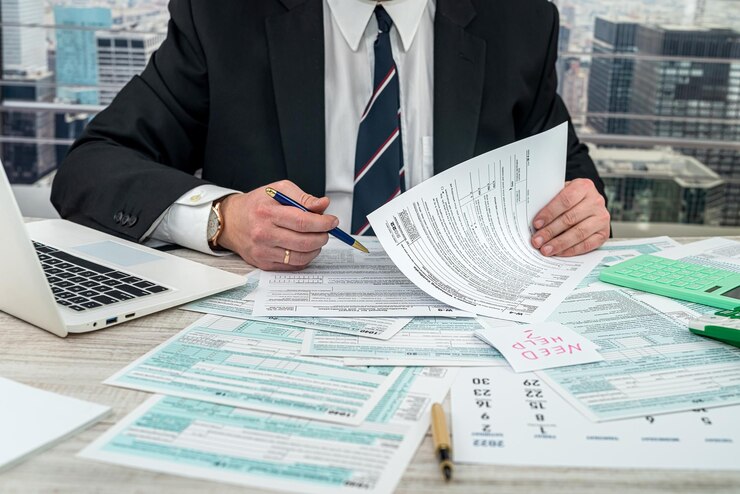charter business, whether it’s yachts or private jets, relies heavily on understanding and optimizing occupancy rates. Accurately calculating these rates can significantly impact your bottom line, allowing you to make informed decisions about marketing strategies, pricing, and customer service improvements. This blog post aims to guide you through the process of calculating occupancy in your charter business, helping you maximize revenue and streamline operations.
Why Accurate Occupancy Calculation Matters
In the competitive world of charter businesses, knowing how to calculate occupancy accurately is crucial. Occupancy rates reflect how effectively you are utilizing your assets, which directly affects profitability. Misjudging these rates can lead to overbooking, underutilization, or inadequate pricing strategies, causing financial strain or missed opportunities.
how-to-calculate-occupancy-of-a-charter-business Furthermore, high occupancy rates indicate a well-managed operation with strong customer demand. This data can attract investors, improve customer trust, and enhance your industry reputation. Understanding occupancy isn’t just about numbers—it’s about leveraging those numbers to drive your business forward.
This guide will equip you with the knowledge needed to calculate and interpret occupancy rates accurately, ensuring your charter business operates at peak performance.
Understanding the Basics of Occupancy Calculation
Before you can optimize occupancy, you need to grasp the fundamental components and formulas used in its calculation. Occupancy rate is typically calculated by dividing the number of chartered hours (or days) by the total available hours (or days), then multiplying by 100 to express it as a percentage.
Key terms include available capacity, referring to the total hours or days your charter can be booked, and booked capacity, which indicates the hours or days already reserved. These metrics provide a snapshot of your operational efficiency and potential revenue generation.
Familiarizing yourself with these concepts ensures you can accurately assess your business’s current performance and identify areas for improvement.
Factors Influencing Occupancy Rates in the Charter Industry

how-to-calculate-occupancy-of-a-charter-business Occupancy rates don’t exist in a vacuum; various factors can influence them. Seasonality plays a significant role, with demand often peaking during holidays or specific seasons. Understanding these patterns helps in planning pricing and marketing strategies effectively.
Pricing strategy is another critical factor. Competitive pricing can enhance demand, while premium pricing might reduce occupancy but increase revenue per booking. Striking the right balance is essential for maximizing profits.
External factors like economic conditions or regulatory changes can also impact occupancy. Staying informed and adaptable is key to sustaining occupancy rates and ensuring business resilience.
Measuring and Tracking Occupancy Over Time
Tracking occupancy isn’t a one-time task; it’s an ongoing process. Implementing a robust system for measuring and monitoring occupancy over time can reveal trends and insights into your business’s performance.
Utilizing historical data allows you to forecast future occupancy levels and set realistic goals. Regularly reviewing this data ensures you can adjust strategies promptly, adapting to changing market conditions or customer preferences.
Performance evaluation through consistent tracking helps identify successful strategies and areas needing attention. This proactive approach leads to more informed decisions and sustained business growth.
Learning from Success Stories in Occupancy Management

how-to-calculate-occupancy-of-a-charter-business Real-life examples of effective occupancy management can provide valuable insights and inspiration. Consider businesses that have successfully navigated occupancy challenges through innovative approaches.
For instance, a yacht charter company might increase occupancy by offering flexible booking options during off-peak seasons, attracting customers who prefer less crowded experiences. A jet charter might collaborate with luxury travel agencies to offer exclusive packages, tapping into a new customer base and boosting occupancy.
Analyzing such case studies helps you identify potentially applicable strategies for your own business, fostering creativity and adaptability in your approach to occupancy management.
Tools and Technologies to Simplify Occupancy Management
In our digital age, technology plays a vital role in simplifying occupancy calculations and management. Various software solutions can automate booking processes, track occupancy data, and generate insightful reports.
Adopting a centralized booking system streamlines operations and reduces human error, ensuring accurate occupancy tracking. Analytical tools can provide real-time data and predictive analytics, helping you make data-driven decisions swiftly.
Exploring these technologies and integrating them into your business can enhance efficiency, accuracy, and ultimately, profitability.
Strategies for Improving and Maximizing Occupancy
Maximizing occupancy involves strategic planning and execution. Consider these effective strategies:
- Dynamic Pricing: Adjust prices based on demand fluctuations to maximize revenue and occupancy. Real-time data analysis supports informed pricing decisions.
- Targeted Marketing: Utilize customer data to create personalized marketing campaigns. Engaging with niche markets or demographics can boost occupancy rates significantly.
- Customer Loyalty Programs: Encourage repeat bookings by offering loyalty rewards or discounts for frequent customers. This not only increases occupancy but also enhances customer relationships.
Implementing these strategies requires ongoing analysis and adaptation, ensuring they align with your business goals and market conditions.
Conclusion
Mastering occupancy calculation is an essential skill for any charter business owner, impacting every aspect from pricing to customer satisfaction. By understanding the factors influencing occupancy, utilizing technology, and implementing strategic initiatives, you can optimize your operations and achieve sustained growth.







